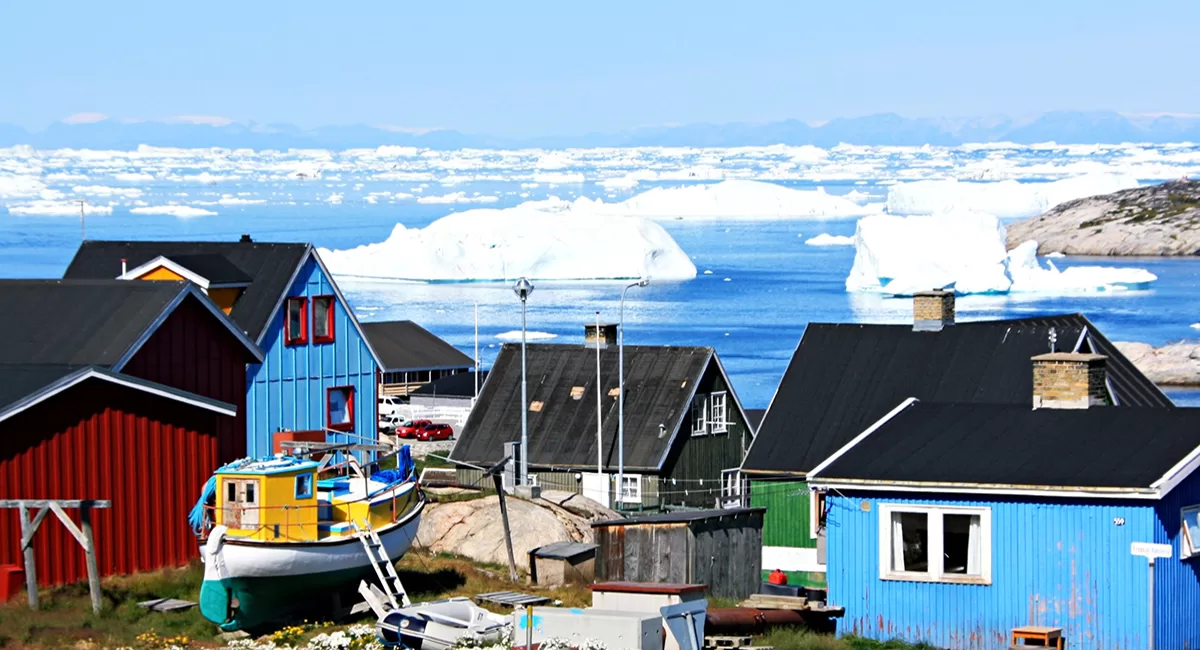In the last several decades climate change has gone from an abstract theory to something that farmers all over the world now feel the effects of. The characteristics of production are changing in accordance to latitude, and in general agriculture is getting harder as the weather becomes more volatile and swings between extremes. The way farmers approach their management practices today will not likely be the same in thirty years. In some places in the world, particularly hotter biospheres, agriculture may eventually be no longer possible.
While global warming may be the end of dairy farming in some places, for another it may be just the beginning of one. Greenland has been without a dairy industry for over 500 years. The original Viking settler, Eric the Red, landed on the southern coast of the country in 1,000 AD, before the last ice age. Although naming it “Greenland” was meant to make it more enticing to other potential colonists, the lower parts of the island were fairly plush in comparison to the ice-dominated terrain of today. Excavations suggest that he had multiple barns with at least 100 cattle in each of them. In the rugged landscape with few trees for timber, he separated some of the stalls with the shoulder bone of a whale. Nonetheless, despite their creativity and determination, the original Greenlanders disappeared five centuries later, the reason not yet evident in archaeological records.
Today, only 50,000 people inhabit the island. The dairy industry in its entirety consists of 22 cows. A few of the south-facing slopes grow just enough grass and rye to sustain them, in the absence of cold spells. However, that is changing.
Due to warming temperatures, the ice sheet that covers 80% of Greenland is melting. For the first time in the lives of anyone there, pine trees have begun growing. This is the first generation of islanders to use a plow—mostly for potatoes in a few selected areas. The growing season is two weeks longer than it was thirty years ago, which, considering that at times in the summer there are 20 hours of daylight, adds up.
In anticipation to the changing environment, Greenland’s chief agricultural advisor, Kenneth Høegh, has begun planning for the initiation of a dairy industry from scratch. Presently, the only major form of livestock on the island is a herd of 600 reindeer that graze over a range of 15,000 square miles and must be corralled by helicopter. It is Høegh’s hope that Greenlander’s diet, which is traditionally heavy on raw whale meat and seal blood, will be complimented with fresh dairy products. Not only will this improve the health and quality of life of local people, but further their independence from Denmark, of whom has sovereignty over the island.
Other dairy industries in the world have generally began with the settlement of the area and have changed according to the shifting social, political, and economic values of the area’s people. At present, there are different ways to construct an industry, from the Israeli communal kibbutz to unabashed Australian deregulation, to the quota system of Iceland. Within and among countries the economics are highly debated. Because profit margins in dairy farming tend to be universally marginal, some would argue that no one has gotten it right yet. Although Greenland’s dairy industry will be one of unique challenges, it will be interesting to see how they will create their policy after looking at the rest of the world.
The few farmers that do exist in Greenland now work beneath the great cracking noise of glaciers breaking into the sea. It remains to be seen whether the changes from global warming will have a net positive affect for the people of Greenland in the final calculation, but no one is arguing that it will be different. The first generation of Greenland dairy farmers are likely going to have to be as rugged as the landscape around them to survive the growing pains of starting a new industry, and as resourceful as their distant forefathers. While the structure of this new sector remains veiled, there is no doubt what these men and women will mean to their communities and country.
This article is part of The Milk House Column series, published in print across three countries and two languages. It can also be found at themilkhouse.org.
This article appeared in a similar form in Progressive Dairyman.

